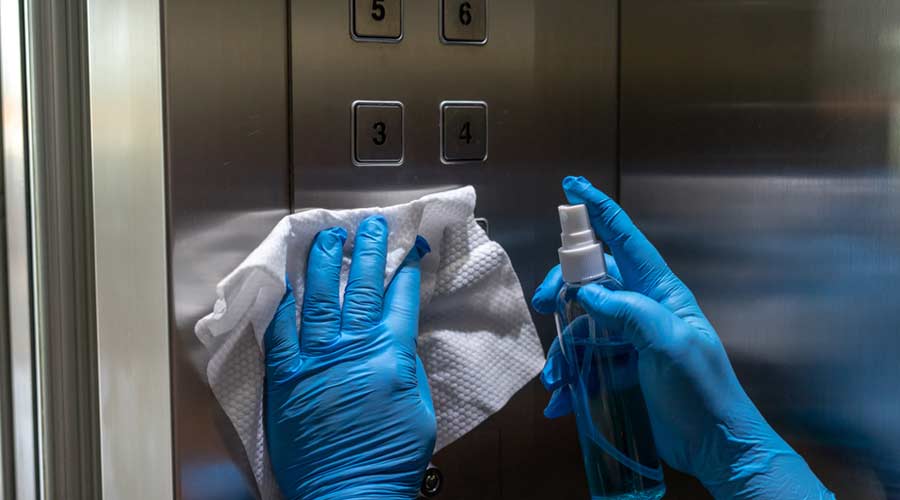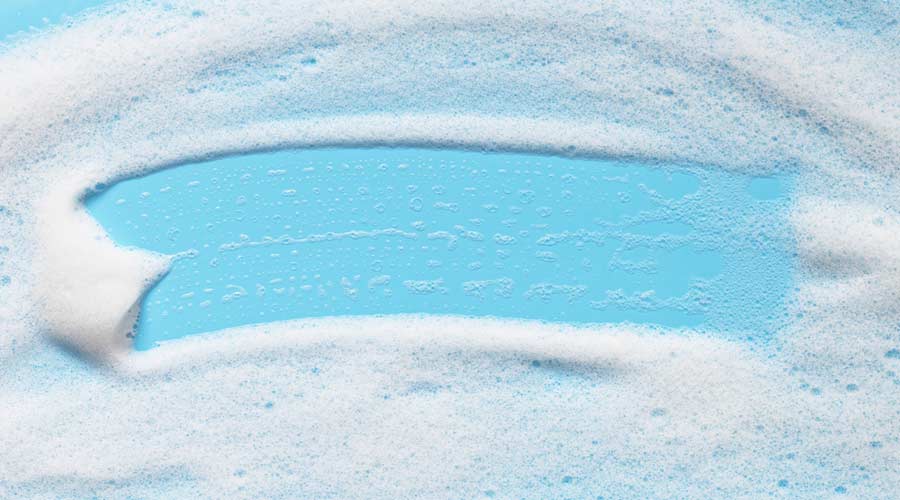
Workplace injuries might just be the most frustrating cause of staffing issues for a facility cleaning manager. Not only can they leave staff shorthanded at the slip of a disk or sprain of a wrist, but they can cause good, honest workers significant pain, or worse. Fortunately, there’s a lot that can be done to avoid workplace injuries, and one of the best ways to do so is to embrace ergonomics-oriented tools like telescoping equipment.
A writer, consultant, and businessman in the industry for over 20 years, Ben Walker has worked with many large operations that were as desperate to rebuild their organization as the New York Jets. To return to prominence, these departments must often overhaul their training, streamline their workload, and invest in the best cleaning tools. Unsurprisingly, Walker has found this triad of triumph almost universally results in greatly diminished rates of injury occurrence, and lightweight telescoping equipment is part of the reason why.
As the commercial cleaning world continues to embrace ergonomics on the job site, telescoping equipment seems well suited to rise in popularity. That’s because telescoping equipment allows employees to custom-fit the tools so they can keep their shoulders, elbows, and wrists working in what is referred to as the “power zone” — a fun name for the area ranging from about the middle of a person’s chest to a few inches above the knees.
Telescoping equipment helps a person to stay in the power zone when they work, and spend less time using their smaller muscle groups. The lack of strain and repetitive motion in those problem areas reduces the risk of injury, which is a topic that keeps facility managers anxious morning, afternoon, and night.
“Custodial work typically accounts for 30 percent or higher of an overall facility management budget,” says Walker. “Custodial workers historically are among the highest injury rates in facilities. By investing in ergonomic tools, proper training, and constant feedback, a cleaning manager may be able to reduce the risk of injury in their custodial department.”
Tools for the Job
To get into that power zone of goodness, and out of that world of hurt, one doesn’t simply grab any sleek-looking cleaning tool. What facility cleaning managers need to do is look for versions of cleaning tools that have been maximized to be lighter and easier to maneuver. Walker says to consider switching from a classic Kentucky mop to a microfiber version — especially one with an adjustable pole. These tools reduce the amount of repetitive bending staff must make at the waist. Plus, microfiber mops retain less water after being wrung, making them much lighter than their forefathers. Also consider telescoping mop poles with ergonomic bends, which Walker says greatly reduce the wear on wrists and elbows.
“Repetitive over-exertions usually cause work-related musculoskeletal disorders, such as rotator cuff syndrome, etc.,” says Dr. Steven Bao, an affiliate professor at the University of Washington, with expertise in occupational health, workplace safety, and risk assessment. “Improper upper arm and shoulder postures can result in overexertion in the shoulder region. Telescoping mop handles will have the potential to improve the upper arm and shoulder postures so that the exertion on the shoulder will be reduced. Therefore, injuries could be prevented.”
Bao adds that the telescoping mops cannot be asked to shoulder the whole load. To reap the benefit of telescoping mops, facility cleaning managers should properly train their workers on how to use the tools with correct upper arm and shoulder postures and also teach them how to ensure the mops are adjusted properly.
It’s not just the upper arm and shoulder that’s a concern. Workers performing prolonged, repetitive tasks like mopping can develop carpal tunnel syndrome, hand tendinitis, and lower back issues.
“Other telescoping mop handles have curved handle designs. They are good to be used in mopping tasks that involve frequent low clearance area cleaning such as under cabinets and shelves,” says Bao. “With straight mop handles, awkward back bending occurs and can cause low back injuries. With curved telescoping mop handles this awkward back posture can be improved thus reducing the chance of developing back injuries.”
Well-made extendable dusters with bendable heads are also a blessing for staff. These tools allow them to avoid doing their best Stretch Armstrong impersonation, standing on their toes, or hopping on unsteady furniture just to further their reach. Walker finds that many cleaning operations will try to save some bucks by purchasing single or two-stage dusters, but that can make things harder on the worker — and increase the risk of injury.
“The ones that have three stages are my favorite,” says Walker. “They can extend up to, and some beyond, 40 inches. If you have a shorter worker, they can reach vents, ledges, etc., and stay stable, grounded.”
Deck brushes, corner brushes, floor squeegees, window tools, or any other brush intended for detailed work is also a great asset to have — especially with ergonomics in mind. These tools keep staff on their feet, and off their knees. Walker likes using these tools for detailed cleaning of restrooms and hard floor areas.
He comments that several vacuum manufacturers do a good job of making high-dusting kits for project cleaning hard-to-reach areas like the work K-12 schools often do during their summer deep cleanings. These tools allow users to dig deep and do the detail work that is generally harder to accomplish with an extendable duster.
Higher Learning
During the school year, students and faculty can help make cleaning safer — no telescoping tools involved. As the program director of Indoor Air research at the University of Tulsa, Richard Shaughnessy was involved in a study the school did with the University of Colorado exploring good cleaning practices in K-12 settings.
“One major thing we found in our study was at the end of the day, the occupant can do a world of good by clearing difficult areas to make it easier for the custodian.”
While they might not be as widely used, adjustable lobby brooms and dust pans are a favorite of Walker’s because they allow users to avoid bending at the waste and stay upright when collecting large debris off the floor. They also keep users from exiting the power zone.
If it’s not already apparent, Walker is a major advocate for cleaning tools that improve ergonomics. Naturally, he has a telescoping tool that he thinks deserves more love. Toilet bowl brushes with long handles and stiff bristles are a major asset, especially for those cleaning around triple-digit toilets per day.
“That’s a lot of repeated bending at the waist and using small muscle groups in the arms,” says Walker. “The longer the handle, the easier it is for the cleaner to avoid repeated bending over. It also comes with the bonus of not having to keep their head close to the opening of the toilet bowl.”
The great thing about starting to explore telescoping cleaning tools is that it does not all have to happen overnight — facility cleaning managers can explore what they and their staff like best. A good way to begin is by incorporating tools used in daily tasks. For that reason, Walker suggests most begin overhauling their restroom program first. After that, look at bringing along tools used in moping tasks. As facility cleaning managers dig deeper into telescoping cleaning tools, it is imperative they keep up with the training, too.
“Many times, an operation will invest in expensive ergonomic tools and not take the necessary time to modify behavior,” says Walker. “If you’re going to make the investment, invest in education as well. Remember, if your folks tell you it doesn’t work or it’s making them work harder — that’s a sign that you’ve missed something in training.”
Jake Meister is the Senior Associate Editor of Facility Cleaning Decisions, Sanitary Maintenance, Contracting Profits and CleanLink.com.

 The Down and Dirty on Cleaning in Virus Season
The Down and Dirty on Cleaning in Virus Season How Surfactant Use is Expanding in Commercial Cleaning
How Surfactant Use is Expanding in Commercial Cleaning